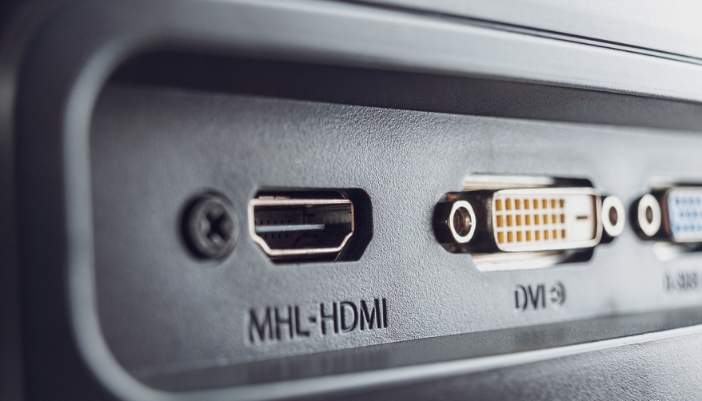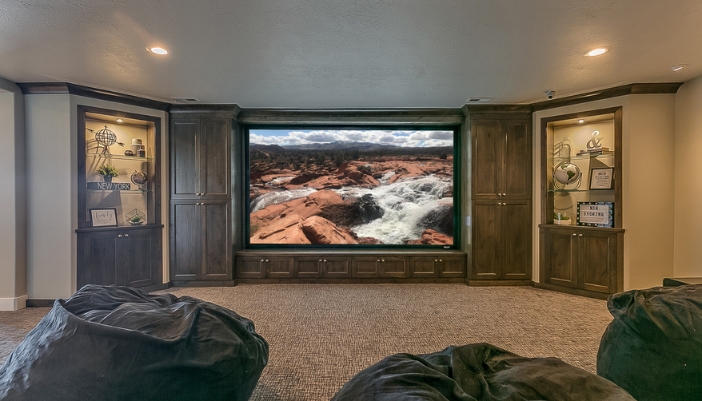Picture this: you've spent weeks setting up your dream surround sound system. The speakers are perfect, the cables are neatly tucked away, and you're ready for movie night. But when you hit play, the sound falls flat. What gives? Nine times out of ten, the problem isn't your speakers—it's your receiver. Choosing the right receiver can feel like decoding a tech manual, but it doesn't have to be. That's why our experts at Plaza Electronics & Appliances are here to simplify the process, so you can focus on what matters—getting incredible sound.

HDMI Inputs: The Backbone of Modern Connections
So, you've got a shiny new surround sound system, but how are you going to connect it all? This is where HDMI inputs swoop in as the unsung heroes. Without enough of them, you'll be playing an endless game of musical cables. Nobody has time for that! Your receiver's HDMI ports determine what devices you can connect and how seamless your entertainment experience will be.
- Enough Inputs for Every Device: Count your devices—streaming boxes, gaming consoles, Blu-ray players, and more. Make sure your receiver has enough HDMI inputs to handle them all without constant unplugging.
- ARC/eARC Support: Audio Return Channel (ARC) or Enhanced ARC (eARC) lets your TV send audio back to the receiver, which is perfect for using built-in TV apps like Netflix or Disney+.
- 4K, 8K, and HDR Compatibility: To keep up with today's crystal-clear resolutions and dazzling colors, choose a receiver that supports the latest video formats, such as 4K HDR or even 8K, if you're futureproofing.
- HDMI 2.1 for Gamers: If you're into gaming, HDMI 2.1 is a must for features like variable refresh rates and low latency for a smooth, lag-free experience.
Pro Tip:
Always choose a receiver with a couple of extra inputs to avoid running out as you add more devices in the future!

Surround Sound Formats: From Classic to Cutting Edge
If your receiver doesn't support the right surround sound formats, you're basically telling your speakers to whisper instead of sing. Your receiver's format compatibility decides whether you'll feel like you're in the middle of a thunderstorm or just listening to raindrops from another room. Let's make sure you're getting the most out of your speakers!
- Dolby Atmos and DTS:X: These are the big names in immersive audio. With support for these formats, you'll hear sound from every direction—even overhead—making explosions, rain, or whispering footsteps feel spine-tinglingly real.
- Traditional Surround Sound (5.1 and 7.1): If you're sticking with a more classic setup, look for 5.1 or 7.1 compatibility to ensure a cinematic experience with surround effects that move around you.
- Upmixing for Older Content: Some receivers offer upmixing, which transforms older stereo or basic surround sound audio to play through all your speakers. This is great for rewatching older favorites!
Convenience Features for a Seamless Experience
Your receiver should work as hard as you do without complicating things. With the right features, your system can go from "frustrating tech" to "effortless entertainment" in seconds. From streaming options to user-friendly controls, these conveniences are must-haves for modern setups.
- Built-In Streaming: Many receivers come preloaded with apps like Spotify or Tidal and support Wi-Fi and Bluetooth for effortless, wireless streaming from your favorite devices.
- Multi-Room Audio: Look for AirPlay 2 or other multi-room systems that sync music across your entire space for whole-home listening.
- Voice Assistant Compatibility: Whether you prefer Alexa, Google Assistant, or Siri, voice control makes it easy to adjust volume, skip tracks, or power on your receiver without lifting a finger.
- Easy Setup and Navigation: Modern receivers often include intuitive on-screen menus and smartphone apps to simplify setup and let you tweak settings on the fly.

Optimizing Sound for Your Space
Getting incredible sound isn't just about plugging in speakers—it's about making sure your receiver can power them properly and adapt to your room. Power output and room calibration are the dream team that ensures your sound is as clear, rich, and immersive as possible, no matter where you set up.
- Power Output Matters: Your receiver's wattage (per channel) ensures your speakers perform at their best. Choose a receiver with enough power for your specific speaker setup, keeping room size in mind. Larger spaces need higher wattage for room-filling sound, while smaller rooms can work with less.
- Match Impedance: For optimal performance, make sure your receiver's impedance matches or exceeds your speakers' rating. This avoids underpowering your system or risking damage.
- Room Calibration Systems: Many modern receivers include built-in calibration that analyzes your room and adjusts sound settings to match. These systems compensate for tricky layouts, vaulted ceilings, or irregular furniture placement to ensure balanced, detailed audio.
Pro Tip:
If you're setting up in a big, open-concept space, prioritize a receiver with higher wattage and room calibration. This combo ensures powerful sound that effortlessly adjusts to your environment.

Budget vs. Features: Finding Your Sweet Spot
When it comes to receivers, the price tag can range from budget-friendly to "Do I really need that?" While it's tempting to go all-in on the fanciest model, the truth is you don't have to break the bank to get incredible sound. The key is knowing which features you actually need and where you can cut back.
- Prioritize Must-Have Features: Focus on essentials like enough HDMI inputs, support for your preferred surround sound formats, and power output matching your speakers. These are the non-negotiables for outstanding performance.
- Skip the Extras You Won't Use: If you're not planning to stream music directly or use voice assistants, skip models with those features. Similarly, if you don't have height speakers, Dolby Atmos might not be a dealbreaker for your setup.
- Think Long-Term: Futureproofing is important, but only to a point. Look for features like 4K/8K compatibility and Dolby Atmos if you plan to upgrade your setup later, but don't pay for tech you'll never use.
- Set a Realistic Budget: Receivers can last for years, so it's worth investing in one that balances quality with price. Focus on models that meet your current needs without feeling outdated in a year or two.
Ready to Transform Your Sound System?
Your receiver is the key to unlocking the full potential of your surround sound system. From thrilling cinematic audio to immersive music playback, the right choice can completely transform your experience. If you're still unsure which features you need, or how to match a receiver to your setup, our Plaza Electronics & Appliances team is ready to help. Stop by today to chat with our experts and explore our selection—we'll make sure you find the perfect receiver to bring your sound system to life.